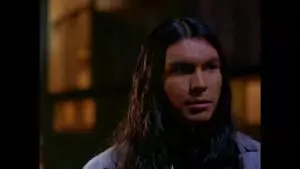 The subject of mental disorders has long become a niche for all kinds of thriller and horror movies. Roughly 80% of movies dedicated to this topic are about serial killers, perverts, or demonic possessions, and their main goal is to make the public frightened, only to let them out of a cinema theater relieved: “Whew, thank God it was just a movie.” However, what such movies almost never show is that the majority of mental disorders are excruciating for people suffering from them; that suffering from a psychological problem is traumatizing and never pleasant; that it is a real drama, after all. At the same time, movies that honestly try to show mental problems as they really are often make great stories, deeply affecting the public, drawing attention to the problems and needs of mental patients, and increasing tolerance and compassion towards psychologically ill people. “Sybil,” the movie about a woman with dissociative identity disorder, is one of such pictures. Filmed in 2006 by Joseph Sargent as a remake of an adaptation of a book with the same name released in 1976 (the book itself, written by Flora Rheta Schreiber, was published in 1973), “Sybil,” despite some of its flaws, is a touching and dramatic story of a woman fighting for her mental welfare with 16 personalities occupying her mind.
The subject of mental disorders has long become a niche for all kinds of thriller and horror movies. Roughly 80% of movies dedicated to this topic are about serial killers, perverts, or demonic possessions, and their main goal is to make the public frightened, only to let them out of a cinema theater relieved: “Whew, thank God it was just a movie.” However, what such movies almost never show is that the majority of mental disorders are excruciating for people suffering from them; that suffering from a psychological problem is traumatizing and never pleasant; that it is a real drama, after all. At the same time, movies that honestly try to show mental problems as they really are often make great stories, deeply affecting the public, drawing attention to the problems and needs of mental patients, and increasing tolerance and compassion towards psychologically ill people. “Sybil,” the movie about a woman with dissociative identity disorder, is one of such pictures. Filmed in 2006 by Joseph Sargent as a remake of an adaptation of a book with the same name released in 1976 (the book itself, written by Flora Rheta Schreiber, was published in 1973), “Sybil,” despite some of its flaws, is a touching and dramatic story of a woman fighting for her mental welfare with 16 personalities occupying her mind.

✅ AI Essay Writer ✅ AI Detector ✅ Plagchecker ✅ Paraphraser
✅ Summarizer ✅ Citation Generator
Events depicted in “Sybil” had occurred in real life; the movie is a biopic dedicated to Shirley Ardell Mason, a woman who indeed developed 16 separate, autonomous personalities, in order to defend her psyche from unspeakably cruel tortures she had undergone as a child. As an adult, Shirley started to visit Dr. Cornelia Wilbur, a New-York-based psychoanalyst trying to get back to normal life. Though Shirley’s case was unique for psychiatry back then, Dr. Wilbur managed to bring her patient back to health, and remained her close friend for the rest of her life. Dr. Wilbur’s and Shirley Mason’s interviews were laid in the basis of Flora Schreiber’s book, three years after publication followed by a movie. Shirley’s (or Sybil’s, as she is called in the book) story was so alarming and tragic, however, that in 2007, Joseph Sargent decided to make a new screen version of it.
According to the movie, Sybil comes to the doctor in 1957, complaining about what she believes to be blackouts, or amnesia—the periods of “lost” time, when she could not remember neither what she did, nor what she said, or whom she met with. What scared Sybil even more is that people around her acted as if during these blackouts, she was still living a normal life, as if her body was possessed by someone else while Sybil was “away.” Rather soon, Dr. Wilbur understands that Sybil might have developed a split personality; her suspicions are confirmed when Sybil, slipping away during one of the meetings with the doctor, is substituted by Peggy Lu—an angry independent girl always trying to break things made of glass. As the treatment goes on, Dr. Wilbur meets Sybil’s other personalities: exquisite French woman Vickie, scared Peggy Ann, kind and religious Mary, bright and lively Vanessa, teenagers Tom and Sid, and many others.Each of these personalities emerged as Sybil’s reaction to horrible events she had gone through in her younger years; her child psyche, unable to withstand the cruelties not even an adult would, shattered into fragments, each being an aspect of the true Sybil. For example, as Sybil was always prohibited to manifest her anger, she had to suppress it—to the extent when it became autonomous, transforming into Peggy Lu, a girl who helps get out all of Sybil’s rage. Being punished for crying, Sybil had to “delegate” this function to Peggy Ann; being an artistic person in love with everything beautiful, dreaming of journey’s and new impressions, Sybil “created” Vickie and Vanessa; Marcia helps Sybil’s angst and suicidal thoughts, Mary was responsible for kindness, and so on.
The reason standing behind the split was Sybil’s mother Hattie: a disturbed and deeply religious, conservative woman, supposedly suffering from schizophrenia. It is difficult to tell whether she loved Sybil, but due to her own life misfortunes, she turned into a monster, beating, raping, humiliating, suppressing, and literally trying to kill her child throughout her entire childhood. It is probably not wise to describe all the tortures Hattie subjected Sybil to; it is enough to say that those of them shown in the movie do not make even 50% of what Hattie really did to her daughter (the book is more detailed on this point).
Anyways, Sybil started her treatment, and despite numerous complications, Dr. Wilbur managed to get Sybil “acquainted” with her other personalities, responsible for stealing her time and life. As a part of treatment, Dr. Wilbur had to use hypnosis, trying to dig into the most deeply-burrowed memories, and to merge all personalities in one. The movie ends with the scene of the first successful hypnosis session, followed by a short afterword, describing Sybil’s and Dr. Wilbur’s later life.
What annoyed me about the movie is that it seems to be too short for the scales of the drama it tries to recreate. Decades of treatment compressed into 90 minutes look, mildly speaking, unconvincing—as well as the manner in which Jessica Lange acts as a psychoanalyst. No, I do not intend to say that she acted poorly—on the contrary, she is a skilled actress; but sometimes it seemed to me that whoever wrote the script for Jessica Lange’s character did not know much about psychoanalysts. She is too pressing, too intrusive; sometimes she throws her interpretations at Tammy Blanchard’s Sybil, as if trying to say, “This is what you really feel, you must be feeling this, you must hate your mother for what she did to you.” Perhaps it is a result of a really short time-study; perhaps her interpretations were mostly aimed at the movie’s audience, not Sybil. Maybe it is just my impression, and all psychoanalysts do that; anyways, Dr. Wilbur in this movie appeared more as Sybil’s concerned friend to me, rather than a professional.
Tammy Blanchard did well; her role in this movie was probably the most difficult one, and she did her best, playing with her voice modulations and facial expressions so skillfully that I often got the impression that I was watching a real person with split personalities. However, once again because of the time-study, it looked like the director tried to cram all the variety of Sybil’s personalities into a tiny box of a 90-minutes movie. Just like in a circus, “Look what else this exotic animal can do.” Instead of focusing on each personality and disclosing their inner world, Sargent demonstrated the majority of them rather superficially, in my opinion, instead focusing on the moments that could be omitted—such as Dr. Wilbur’s confrontations with her chauvinistic male colleagues who did not believe in her methods of treatment.
Nevertheless, “Sybil” is a powerful movie. It is about hope and strength; it shows how kindness and professionalism can cure even the deepest wounds, bringing a shattered suffering soul back together. It also shows how dangerous prejudice and ignorance can be; how fragile a child’s psyche is, and how important it is for parents to give their children love, not hatred. “Sybil” can be advised as an aperitif to a book—those interested in Shirley Mason’s story might rather want to read it instead of watching the movie, because even though the movie is dramatic, the book itself is terrific. “Sybil” is a solid remake, but still inferior, so to say, to the first screen adaptation of 1976. Still worth watching, though.
Follow us on Reddit for more insights and updates.
Comments (1)
Welcome to A*Help comments!
We’re all about debate and discussion at A*Help.
We value the diverse opinions of users, so you may find points of view that you don’t agree with. And that’s cool. However, there are certain things we’re not OK with: attempts to manipulate our data in any way, for example, or the posting of discriminative, offensive, hateful, or disparaging material.




It’s a very sad story of what can happen to young children. I saw the first movie and it is great.